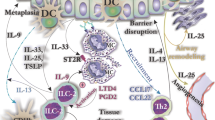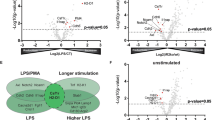Abstract
Mast cell degranulation affects many conditions, e.g., asthma and urticaria. We explored the potential role of the P2Y14 receptor (P2Y14R) and other P2Y subtypes in degranulation of human LAD2 mast cells. All eight P2YRs were expressed at variable levels in LAD2 cells (quantitative real-time RT-PCR). Gene expression levels of ADP receptors, P2Y1R, P2Y12R, and P2Y13R, were similar, and P2Y11R and P2Y4R were highly expressed at 5.8- and 3.8-fold of P2Y1R, respectively. Least expressed P2Y2R was 40-fold lower than P2Y1R, and P2Y6R and P2Y14R were ≤50 % of P2Y1R. None of the native P2YR agonists alone induced β-hexosaminidase (β-Hex) release, but some nucleotides significantly enhanced β-Hex release induced by C3a or antigen, with a rank efficacy order of ATP > UDPG ≥ ADP >> UDP, UTP. Although P2Y11R and P2Y4R are highly expressed, they did not seem to play a major role in degranulation as neither P2Y4R agonist UTP nor P2Y11R agonists ATPγS and NF546 had a substantial effect. P2Y1R-selective agonist MRS2365 enhanced degranulation, but ~1,000-fold weaker compared to its P2Y1R potency, and the effect of P2Y6R agonist 3-phenacyl-UDP was negligible. The enhancement by ADP and ATP appears mediated via multiple receptors. Both UDPG and a synthetic agonist of the P2Y14R, MRS2690, enhanced C3a-induced β-Hex release, which was inhibited by a P2Y14R antagonist, specific P2Y14R siRNA and pertussis toxin, suggesting a role of P2Y14R activation in promoting human mast cell degranulation.








Similar content being viewed by others
Abbreviations
- ADP:
-
Adenosine 5′-diphosphate
- AR-C66096:
-
(2-(Propylthio)adenosine-5′-O-(β,γ-difluoromethylene)triphosphate tetrasodium salt)
- ATP:
-
Adenosine 5′-triphosphate
- BSA:
-
Bovine serum albumin
- (FcεRI):
-
Fc region of immunoglobulin E (IgE)
- GAPDH:
-
Glyceraldehyde 3-phosphate dehydrogenase
- GPCR:
-
G-protein-coupled receptor
- β-Hex:
-
β-Hexosaminidase
- MRS2211:
-
2-[(2-Chloro-5-nitrophenyl)azo]-5-hydroxy-6-methyl-3-[(phosphonooxy)methyl]-4-pyridinecarboxaldehyde
- MRS2365:
-
[[(1R,2R,3S,4R,5S)-4-[6-amino-2-(methylthio)-9H-purin-9-yl]-2,3-dihydroxybicyclo[3.1.0]hex-1-yl]methyl]diphosphoric acid mono ester trisodium salt
- MRS2500:
-
(1R,2S,4S,5S)-4-[2-iodo-6-(methylamino)-9H-purin-9-yl]-2-(phosphonooxy)bicyclo[3.1.0]hexane-1-methanol dihydrogen phosphate ester tetraammonium salt
- MRS2690:
-
2-Thiouridine-5′-diphosphoglucose
- NF340:
-
4,4′-(Carbonylbis(imino-3,1-(4-methy l-phenylene)carbonylimino))bis(naphthalene-2,6-disulfonic acid) tetrasodium salt)
- NF546:
-
4,4′-(Carbonylbis(imino-3,1-phenylene-carbonylimino-3,1-(4-methyl-phenylene)carbonylimino))-bis(1,3-xylene-alpha,alpha′-diphosphonic acid tetrasodium salt)
- NP-BSA:
-
4-Hydroxy-3-nitrophenylacetyl hapten amide conjugated to bovine serum albumin
- PTX:
-
Pertussis toxin
- qRT-PCR:
-
Quantitative real time polymerase chain reaction
- RBL:
-
Rat basophilic leukemia
- UDP:
-
Uridine 5′-diphosphate
- UTP:
-
Uridine 5′-triphosphate
- UDPG:
-
Uridine-5′-diphosphoglucose (UDP-glucose)
- XAC:
-
8-[4-[[[[(2-Aminoethyl)amino]carbonyl]methyl)oxy]phenyl]-1,3-dipropylxanthine
- PPTN:
-
4-(4-(Piperidin-4-yl)phenyl)-7-(4-(trifluoromethyl)phenyl)-2-naphthoic acid (mesylate salt form)
References
Beaven MA (2009) Our perception of the mast cell from Paul Ehrlich to now. Eur J Immunol 39:11–25
Galli SJ, Tsai M, Piliponsky AM (2008) The development of allergic inflammation. Nature 454:445–454
Okayama Y, Saito H, Ra C (2008) Targeting human mast cells expressing g-protein-coupled receptors in allergic diseases. Allergol Int 57:197–203
Gilfillan AM, Tkaczyk C (2006) Integrated signalling pathways for mast-cell activation. Nat Rev Immunol 6:218–230
Kuehn HS, Jung MY, Beaven MA, Metcalfe DD, Gilfillan AM (2011) Distinct PGE2-responder and non-responder phenotypes in human mast cell populations: "all or nothing" enhancement of antigen-dependent mediator release. Immunol Lett 141:45–54
Di Virgilio F, Chiozzi P, Ferrari D, Falzoni S, Sanz JM, Morelli A, Torboli M, Bolognesi G, Baricordi OR (2001) Nucleotide receptors: an emerging family of regulatory molecules in blood cells. Blood 97:587–600
Bulanova E, Bulfone-Paus S (2010) P2 receptor-mediated signaling in mast cell biology. Purinergic Signal 6:3–17
Wareham K, Vial C, Wykes RC, Bradding P, Seward EP (2009) Functional evidence for the expression of P2X1, P2X4 and P2X7 receptors in human lung mast cells. Br J Pharmacol 157:1215–1224
Sudo N, Tanaka K, Koga Y, Okumura Y, Kubo C, Nomoto K (1996) Extracellular ATP activates mast cells via a mechanism that is different from the activation induced by the cross-linking of Fc receptors. J Immunol 156:3970–3979
Schulman ES, Glaum MC, Post T, Wang Y, Raible DG, Mohanty J, Butterfield JH, Pelleg A (1999) ATP modulates anti-IgE-induced release of histamine from human lung mast cells. Am J Respir Cell Mol Biol 20:530–537
Gao ZG, Ding Y, Jacobson KA (2010) P2Y13 receptor is responsible for ADP-mediated degranulation in RBL-2H3 rat mast cells. Pharmacol Res 62:500–505
Gao ZG, Ding Y, Jacobson KA (2010) UDP-glucose acting at P2Y14 receptors is a mediator of mast cell degranulation. Biochem Pharmacol 79:873–879
Feng C, Mery AG, Beller EM, Favot C, Boyce JA (2004) Adenine nucleotides inhibit cytokine generation by human mast cells through a Gs-coupled receptor. J Immunol 173:7539–7547
Kennedy C, Qi AD, Herold CL, Harden TK, Nicholas RA (2000) ATP, an agonist at the rat P2Y4 receptor, is an antagonist at the human P2Y4 receptor. Mol Pharmacol 57:926–931
Bischoff SC (2007) Role of mast cells in allergic and non-allergic immune responses: comparison of human and murine data. Nat Rev Immunol 7:93–104
Kirshenbaum AS, Akin C, Wu Y, Rottem M, Goff JP, Beaven MA, Rao VK, Metcalfe DD (2003) Characterization of novel stem cell factor responsive human mast cell lines LAD 1 and 2 established from a patient with mast cell sarcoma/leukemia; activation following aggregation of FcepsilonRI or FcgammaRI. Leuk Res 27:677–682
Livak KJ, Schmittgen TD (2001) Analysis of relative gene expression data using real-time quantitative PCR and the 2(-delta delta C(T)) method. Methods 25:402–408
Chhatriwala M, Ravi RG, Patel RI, Boyer JL, Jacobson KA, Harden TK (2004) Induction of novel agonist selectivity for the ADP-activated P2Y1 receptor versus the ADP-activated P2Y12 and P2Y13 receptors by conformational constraint of an ADP analog. J Pharmacol Exp Ther 311:1038–1043
Leff P, Wood BE, O’Connor SE (1990) Suramin is a slowly-equilibrating but competitive antagonist at P2x-receptors in the rabbit isolated ear artery. Br J Pharmacol 101:645–649
Von Kügelgen I (2006) Pharmacological profiles of cloned mammalian P2Y-receptor subtypes. Pharmacol Ther 110:415–432
Jacobson KA, Jarvis MF, Williams M (2002) Purine and pyrimidine (P2) receptors as drug targets. J Med Chem 45:4057–4093
Kuehn HS, Gilfillan AM (2007) G protein-coupled receptors and the modification of FcepsilonRI-mediated mast cell activation. Immunol Lett 113:59–69
Kashem SW, Subramanian H, Collington SJ, Magotti P, Lambris JD, Ali H (2011) G protein coupled receptor specificity for C3a and compound 48/80-induced degranulation in human mast cells: roles of Mas-related genes MrgX1 and MrgX2. Eur J Pharmacol 668:299–304
Olivera A, Rivera J (2011) An emerging role for the lipid mediator sphingosine-1-phosphate in mast cell effector function and allergic disease. Adv Exp Med Biol 716:123–142
Gomez G, Zhao W, Schwartz LB (2011) Disparity in FcεRI-induced degranulation of primary human lung and skin mast cells exposed to adenosine. J Clin Immunol 31:479–487
Guhl S, Babina M, Neou A, Zuberbier T, Artuc M (2010) Mast cell lines HMC-1 and LAD2 in comparison with mature human skin mast cells—drastically reduced levels of tryptase and chymase in mast cell lines. Exp Dermatol 19:845–847
Xia YC, Sun S, Kuek LE, Lopata AL, Hulett MD, Mackay GA (2011) Human mast cell line-1 (HMC-1) cells transfected with FcεRIα are sensitive to IgE/antigen-mediated stimulation demonstrating selectivity towards cytokine production. Int Immunopharmacol 11:1002–1011
Jaffar ZH, Pearce FL (1990) Histamine secretion from mast cells stimulated with ATP. Agents Actions 30:64–66
Diamant B, Krüger PG (1967) Histamine release from isolated rat peritoneal mast cells induced by adenosine-5′-triphosphate. Acta Physiol Scand 71:291–302
Leung CT, Li A, Gao ZG, Peterson-Yantorno K, Jacobson KA, Civan MM (2011) Purinergic regulation of degranulation by human LAD2 mast cells. Invest Ophthalmol Vis Sci. ARVO E-Abstract #2911
Knowles AF (2011) The GDA1_CD39 superfamily: NTPDases with diverse functions. Purinergic Signal 7:21–45
Gauthier JY, Belley M, Deschênes D, Fournier JF, Gagné S, Gareau Y et al (2011) The identification of 4,7-disubstituted naphthoic acid derivatives as UDP-competitive antagonists of P2Y14. Bioorg Med Chem Lett 21:2836–2839
Belly M, Deschenes D, Fortin R, Fournier JF, Gagne S, Gareau Y, et al. (2009) Substituted 2-naphthoic acids as antagonists of GPR105 activity. WO 2009/070873A1
Acknowledgments
This work is supported by the NIDDK Intramural Research Program, National Institutes of Health. We thank Drs. Arnold Kirshenbaum and Dean Metcalfe (NIAID, NIH, Bethesda, MD, USA) for providing LAD2 cells. We thank Prof. Mortimer M. Civan (University of Pennsylvania) for helpful discussions.
Author information
Authors and Affiliations
Corresponding authors
Rights and permissions
About this article
Cite this article
Gao, ZG., Wei, Q., Jayasekara, M.P.S. et al. The role of P2Y14 and other P2Y receptors in degranulation of human LAD2 mast cells. Purinergic Signalling 9, 31–40 (2013). https://doi.org/10.1007/s11302-012-9325-4
Received:
Accepted:
Published:
Issue Date:
DOI: https://doi.org/10.1007/s11302-012-9325-4




